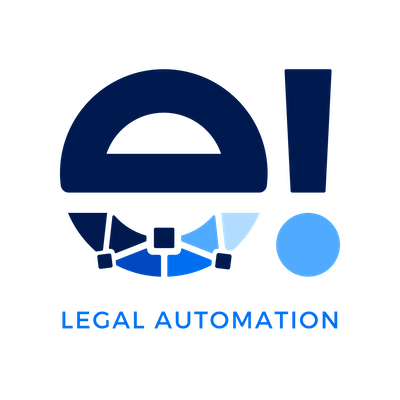Environmental, Social, and Governance (ESG) factors are becoming increasingly important for companies, and investors, consumers, and regulators demand greater transparency and responsibility on these matters. ESG management initiatives, however, can be complex and time-consuming. This is where workflow automation tools can help. Businesses may achieve significant benefits from incorporating ESG into their operations by automating repetitive tasks and streamlining processes.
How to Integrate ESG into Business Workflows
Integrating ESG into your workflow is about making sustainability a core value, a way to operate your business responsibly and contribute to a positive impact on the world. Some of the actions to be taken include:
- Define ESG for your business by determining the most relevant issues for your company (e.g., waste management for a manufacturer, diversity and inclusion for a tech company).
- Evaluate your current performance assessing your company’s environmental footprint, social practices (labor standards, community engagement), and governance structure (transparency, ethics). This will help you identify areas for improvement.
- Set ambitious yet achievable goals for each ESG pillar. Align these goals with your overall business strategy and consider stakeholder expectations. Break down your goals into actionable steps and assign ownership within different departments. This ensures integration throughout your workflows.
- Integrate ESG considerations into everyday business decisions. For instance, factor in energy efficiency when purchasing equipment or prioritize ethical sourcing of materials.
- Communicate your efforts to stakeholders like investors, customers, and regulators. Transparency builds trust, attracts ESG-conscious partners, and trains employees on your goals and how their roles contribute to achieving them. This fosters a culture of sustainability within the company.
- Establish metrics to measure your ESG performance and regularly report on your progress. This proves accountability and allows for course correction if needed.

Automated ESG Reporting
Traditionally, ESG reporting involves manually collecting data from various sources across the organization. This data can include energy consumption, waste generation, employee diversity metrics, and board composition. Once collected, the data needs to be analyzed, formatted, and compiled into a comprehensive report. This process is not only error-prone but also diverts valuable resources from core business activities.
Automated ESG reporting uses software and technology to streamline the collection, analysis, and communication of those data. These platforms centralize information from various sources, automate calculations, and generate reports aligned with leading frameworks offering a significant boost to companies undertaking ESG reporting. Centralized platforms eliminate data silos, streamlining data management and facilitating access for stakeholders. Automation also allows for faster and more transparent communication of ESG performance, fostering trust with stakeholders. Finally, automation can significantly decrease the overall cost of reporting.
Looking ahead, automation will play a critical role as ESG reporting continues to evolve. Expect to see advancements in areas like Artificial Intelligence (AI) for enhanced data analysis and identifying new sustainability opportunities. Machine Learning (ML) algorithms will continuously learn and improve the accuracy of reporting.
Resource Allocation Optimization for ESG Initiatives
Effective Environmental, social, and governance initiatives require strategic resource allocation. This refers to the strategic process of efficiently distributing an organization’s limited resources (financial, human capital, etc.) to maximize the positive environmental and social impact of its ESG goals.
To achieve this aim, companies can use data analytics to pinpoint areas where their efforts can have the greatest impact. Techniques like regression analysis and data visualization can be powerful tools.
Moreover, companies need to conduct cost-effectiveness analysis to determine the additional benefit gained from allocating extra resources to a specific initiative. This helps identify the point where further resource allocation becomes less efficient.
By implementing these strategies, organizations can ensure their efforts are impactful and deliver the greatest positive change.

Enhancing Stakeholder Engagement through Automation
Stakeholder engagement sits at the heart of any successful implementation. However, keeping stakeholders informed and engaged through traditional, manual methods can be a time-consuming and resource-intensive process. Workflow automation saves time, fosters collaboration, and generates valuable data for better Environmental, social, and governance strategies. Hereunder we provide some ways to accomplish this goal.
Regularly deliver customized reports on key ESG metrics (e.g., carbon footprint) to different stakeholders (investors, employees, customers). This fosters transparency and accountability.
Send updates tailored to stakeholder interests. For example, investors receive updates on environmental goals, while employees learn about company-wide sustainability initiatives. This builds trust by demonstrating a commitment to stakeholder needs. Also having efficient communication channels to send targeted email campaigns and implement chatbots to answer basic questions. This keeps stakeholders informed without overwhelming them and frees up resources for more complex inquiries.
Automate surveys and online platforms to gather stakeholder input on ESG goals and progress. This valuable feedback allows for continuous improvement and ensures initiatives resonate with stakeholders.
Risk management and Environmental, Social, and Governance
Environmental, social, and governance risk is just like any other business risk, and a company’s routine risk reduction procedures should include ESG risk management. In fact, even in the lack of an official ESG program, the majority of businesses manage some of these risks. ESG isn’t just about reputation – it’s about proactive risk mitigation. With the right tools and strategies, companies can turn ESG risks into opportunities for long-term success. Workflow automation tools can be valuable in mitigating these risks.
Automate the collection of data on environmental factors like energy consumption or waste generation. This ensures consistency and reduces the risk of errors, having to develop automated workflows to track evolving ESG regulations and identify areas where compliance needs improvement and, implement those automated workflows for reporting and responding to ESG-related incidents, such as environmental spills or ethical breaches.
The Future of ESG and Workflow Automation
ESG and workflow automation are not just trends; they are the building blocks for a more sustainable future. Both continue to evolve; we can expect a deeper integration between the two. Here’s a glimpse into the future:
- AI-powered ESG Insights: Artificial intelligence (AI) can analyze vast amounts of ESG data to identify correlations, predict future trends, and recommend optimized strategies for achieving sustainability goals.
- Real-time Monitoring and Reporting: Real-time data capture and analysis will enable companies to monitor their ESG performance continuously and adjust strategies as needed. This fosters a more dynamic and responsive approach to sustainability.
- Blockchain for Transparency: Blockchain technology can ensure the security and immutability of ESG data, fostering greater trust and transparency with stakeholders.
To sum up, workflow automation provides an effective toolkit for firms to streamline their Environmental, Social, and Governance (ESG) initiatives. Automation enables measurable progress toward sustainability goals by automating monotonous operations, freeing up staff time for strategic planning, and ensuring data quality. As ESG continues to rise in importance, integrating workflow automation will be a critical difference for companies seeking to operate sustainably and achieve long-term success.






